If we ever have to survive a grid-down scenario, how long will Natural Gas last without electricity?
Knowing how much time you have before things go dark and cold could make a big difference, not only in your comfort, but survival.
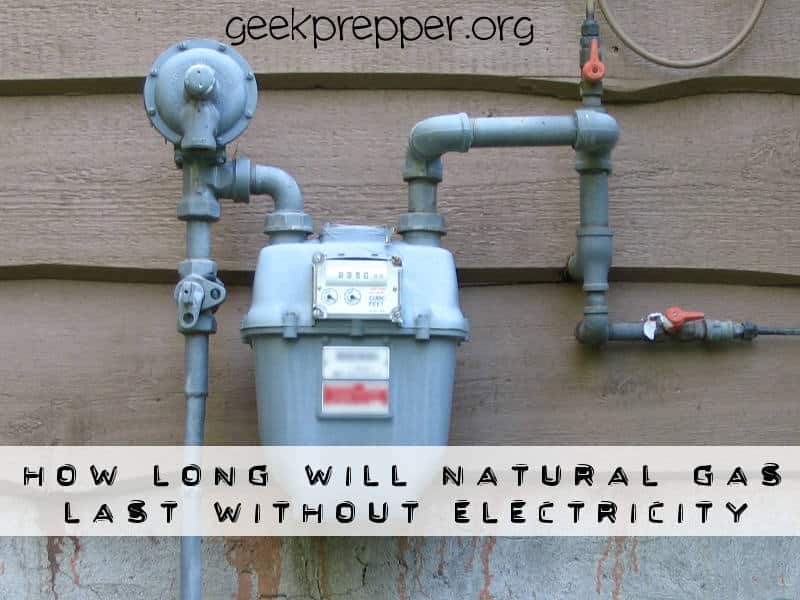
How Long Will Natural Gas Last Without Electricity
The natural gas feeding your house gets its compression from higher pressure “transmission” gas lines. Natural gas has pressure coming straight out of the wellhead, but it needs help to get to its ending destination, your house.
The gas is piped from these lines through “regulator stations”, belonging to your natural gas provider, which step down the pressure to the lines going to your home. At your meter is another regulator which also may step down pressure to your home.
The vulnerability and fragility of our current electric grid time and again is showcased in an unfavorable light.
But what about the natural gas grid? It’s underground, fairly redundant, and so far has a decent reputation for reliability.
What are Natural Gas’ flaws?
The Federal Energy Regulatory Commission (FERC) and the North American Electric Reliability Council (NERC) commissioned and produced a report, titled “report on the Outages and Curtailments During the Southwest Cold Weather Event of February 1-5, 2011” after the Southwest Cold Weather Event of February 1-5, 2011.
The potential deficiencies noted, in the natural gas grid, need to be addressed across the entire U.S., and not just in the Southwest.
Distance from Gas Heads
Distance is one of these flaws. The pipeline transmission system, aka the “interstate highway” for natural gas, consists of 220,000 miles of high-strength steel pipe, 20 inches to 42 inches in diameter.
This pipe highway moves vast amounts of natural gas thousands of miles from producing regions to local natural gas utilities and sometimes directly to large users of natural gas. There are compressor stations every 75 to 100 miles to boost the pressure, that is lost due to the friction of gas moving through steel pipe.
The Natural Gas pipeline network extends across the entire country.
Natural Gas’ Reliance on Electrical Grid
Another of the major flaws of Natural Gas grid is its dependency on the electric grid.
The gas grid relies on electricity. The gas grid requires that pressure must be maintained throughout the system. This pressure is maintained via a system of compressors and pumping stations.
The good news is that some of the main compressor stations, feeding the large interstate pipelines, are typically fueled by natural gas and generate their power with it, to keep operations running. Gas-fueled compressors could be more widely used throughout the system, but they are noisy and have environmental implications.
So in urban areas, the gas distribution companies typically use electric pumps and compressors to bring gas to the consumer. It’s not hard to see where the problem lies here. No electricity, no gas supply.
If you are lucky enough to live along a line that is powered by its own natural gas, you should still have some pressure pushing gas down the line, as long there are no breaks in the line.
Electrical Grid’s Reliance on Natural Gas
The electric grid relies on natural gas. In the U.S.A., natural gas powers almost a third of the electricity generation plants. With the discovery of enormous shale gas reserves and the low prices of natural gas, that number is growing quickly. Almost all new conventional electrical generation on the books in the USA is natural gas-fired.
Cold Weather
There are also vulnerabilities pertaining to gas service, especially during extremely cold weather.
These weather issues start in the field where the gas is collected from wells and routed into the feeder pipeline system. This process can be disrupted by ‘freeze-offs’. Freeze-offs occur when water that is co-produced with methane, crystallizes or freezes, blocking the gas flow and shutting wells.
“Freeze-offs” routinely occur in cold weather. Too many freeze-offs can result in a loss of pressure to the pipeline. If the pressure gets too low, the distribution companies start cutting off customers to maintain adequate pressure. They first curtail service to marginal areas most likely to fail, and simply shut meters.
Unlike the electric grid, which can be restored fairly quickly, once the main problems are fixed, gas restoration is a slow process.
- Teams must close all the meters,
- Purge the system with air
- Re-pressurize with gas
- Teams must visit every location to relight pilot lights and ensure safety.
In the February incident of 2011, 32,000 customers in New Mexico were without gas service, taking days and millions of dollars to restore.
Hurricane Sandy in 2012 compromised the New Jersey coastal natural gas delivery system, with over 1,000 leaks on Long Beach Island alone. According to New Jersey Natural Gas officials, they could not cut gas service to the Island, because if they did it would take over six months to bring service back online, under current government regulations.
What can you do with Natural Gas
Some gas stoves don’t require electricity, except for the light bulb in the oven. Each top burner is approx 6,000 BTU, so doing some cooking or boiling some water can really warm up the kitchen on cold days.
There are generators that run on natural gas. With a properly sized unit, a localized power outage would have almost no impact you on.
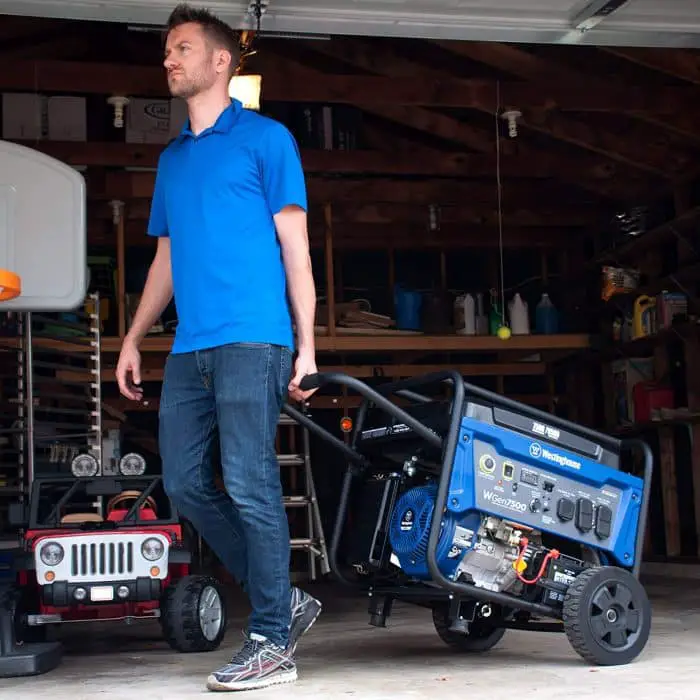
Natural Gas fireplaces can provide a good amount of heat to a room or area of a house. Properly vented gas fireplaces, that can be manually lit, is a nice source of emergency heat. Some of the newer gas fireplace units with remote controls do require electricity.
Most tank type gas water heaters still have thermocouple pilots, so hot water will be available. In a power outage situation you can keep the bathtub filled with hot water. A 30 gallon tub will put 13,750 btu’s into the house if allowed to sit and give up its heat in an hour. The water heater is typically rated at 40,000 input Btu so if you can find a creative way to use this energy you can get some heat in the house. Running the shower for a few minutes can also provide some heat and utilize the energy stored in the water heater.
Most central heating units will not work since they require a fan and electric controls.
How long do I have?
While the natural gas grid seems to be more resilient than the aging, electrical grid, it’s dependence on it means that your natural gas probably won’t last much longer than your electricity, in a true grid-down scenario.
Do I Need To Turn Off Gas When Power Goes Out?
When there is a power interruption, it hinders several activities and affects other appliances you might be using. When a power outage happens, you might wonder, does gas need to be turned off? Simply, you don’t need to turn off your natural gas source when a power outage happens, as it may still be used to power some of your appliances. It is entirely safe to keep it on.
When you do decide to keep your gas line turned during a power outage, you need to make sure that there are no leaks and other damages on the pipelines that may cause seepage.
If you still want to turn your gas pipeline off, here are few steps to do so:
First, find the location of your natural gas meter. Keep in mind that it is essential to know where its site is for when emergencies happen. Once you find the meter, you’ll see a pipe running from underground to the surface.
You will then see a shut-off valve installed parallel to the pipe. The shut-off valve’s location is usually about 6 to 8 inches above the surface. Grab a 12-inches wrench or anything bigger. You may also buy an adjustable wrench if you have one. Then turn the valve ¼ in either direction until you see that it is in a position crosswise to the pipe. Make sure that it is entirely perpendicular to the tube, or else it is not fully closed.
Will A Gas Stove Work Without Electricity?

During power outages, one of the essential appliances you need to have and keep working is your stove. It is necessary for cooking and heating water. However, during power outages, most gas stoves won’t be able to work anymore. Ignition in some stove models is electricity dependent and won’t work during a power outage.
However, there are ways you can still use your gas stove even if the power is out. First, you need to check your gas stove’s user’s manual and see if you can override it. If you can, then good news, it is easy to turn your gas stove without electricity – even models that ignite electronically.
How To Light A Gas Stove Without Electricity?
First, make sure that the gas supply is open. Light the gas stove’s burner by holding a lit match near the burner and turning the burner control knob. When the burner ignites, entirely turn it on, then lower the flame to the desired knob position. You need to exercise extreme caution when overriding your gas stove.
It is important to note that you need to open your windows when attempting to ignite a burner using a match. When ignition fails, gas escapes through the stove without getting lit. If enough volume of gas is present in a closed room, it can be dangerous. The next time you light a match in an attempt to ignite the burner, the gas around the room might catch on fire, which could lead to fatal accidents.
Also, note that after every failed attempt to ignite the burner, you need to turn the control knob to its “off” position to prevent gas from leaking through it.
Do Gas Fireplaces Work Without Electricity?
Another essential thing you need is heat, especially if you live in a place with colder temperatures. Luckily, gas-powered fireplaces can still be used even without the help of electricity. You will always be able to enjoy the warmth it gives to your cozy space.
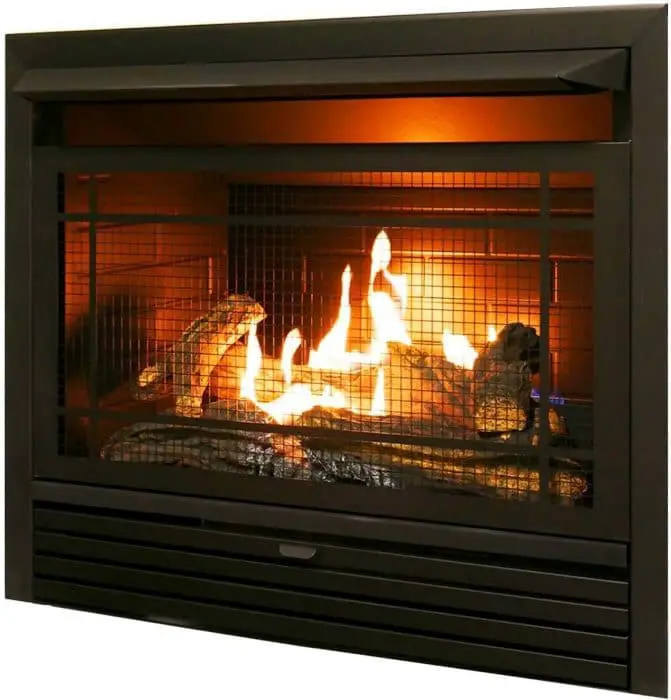
How To Light A Gas Fireplace Without Electricity
First, you need to determine what type of gas fireplace you have. Older models of gas fireplaces have a standing pilot light that ignites the fire without electricity. However, newer models that have electronic ignition systems will require power to work. You may also purchase an extra battery-powered igniter so you can use your fireplace with an electronic igniter.
If you have a traditional fireplace model, then it most likely will have a standing pilot. Even though they don’t need electricity to ignite, you may have to light the standing pilot manually occasionally.
To do so, first, make sure that you turn on the gas valve. This action will allow the supply of gas to your fireplace. Look for the pilot light, which you can probably locate under the fireplace’s mainframe. You may also find it behind the panel. It would be helpful if you use a flashlight while looking for the standing pilot. Turn the knob to its ignite position and push down on it. You will then hear a clicking sound, which means the system is working to ignite the gas to start the pilot. Hold the ignition knob until you see the gas lines under the logs catch on fire.
Will A Gas Furnace Work Without Electricity?
For most users, a power outage would also mean that their gas furnace won’t work, unfortunately. Gas furnaces have several components and parts that require electricity to function. Gas furnaces also have safety systems equipment that won’t allow you to turn them on during an electrical outage. Listed below are the part of a gas furnace that needs electricity to work:
- Circuit Boards – these parts are the ones that serve as a bridge between the thermostat and the furnace. It relays essential information needed for the furnace’s operation.
- Blower Motors – Using electricity, blower motors propel hot air into the duct system, consequently blowing waste products out of the combustion process through the flue.
- Relays – These are switches that control gas flow and other safety devices e.g., thermocouple and fuel regulators.
You can call a technician to help you connect your gas furnace to a generator that will then power the gas furnace’s electrical parts.
When a power outage happens, it is safer to turn off your gas line to the furnace. The power grid might have electricity fluctuations that will damage the electric components inside the boiler once the power returns.
Does A Gas Water Heater Work During A Power Outage
Who wouldn’t want to have wanted to have hot water during cold nights, right? But, when power outages happen, some would be able to use their water heater, while others won’t.
If the gas water heater model you have does not have a tank, you probably won’t be able to use it without electricity. You need the power to use the controls and ignition. However, some tankless gas water heaters can generate electricity from the water flow and therefore won’t need 120V power to work.
Another type of gas water heater is one with power vents. These water heaters also wouldn’t work during power outages because its fans need electricity to function.
If you do have a traditional, naturally vented gas water heater, then, you’re in luck! Usually, vented water heaters have standing pilots like older fireplaces that do not die out when power outages occur.
How Long Does Natural Gas Last?
If most of your appliances now run on natural gas, you’ve probably wondered when it might run out. Just like any natural energy source, natural gas won’t last for an eternity. It is not renewable and will be limited in supply.
Unlike propane, natural gas usage for homes can only come through a pipeline. As long as you connect to the main pipe, you can use natural gas as long as there is supply from the primary source. You also need to make sure that there are no leaks in your line.
Natural gas, however, can still be stored in tanks. It can either be compressed or uncompressed. CNG is the common name for compressed natural gas. You can also store it as LNG or liquefied natural gas.
In the long term, we still have a few years to go before natural gas is completely wiped out. Natural gas is non-renewable and comes from deep beneath the earth. It was formed millions to hundreds of millions of years ago from the remains of animals, plants, and other organisms. These living things had exposure to heat and pressure for an extended period. We simply cannot replicate this process today.
How Long Until Earth’s Natural Gas Supply Runs Out
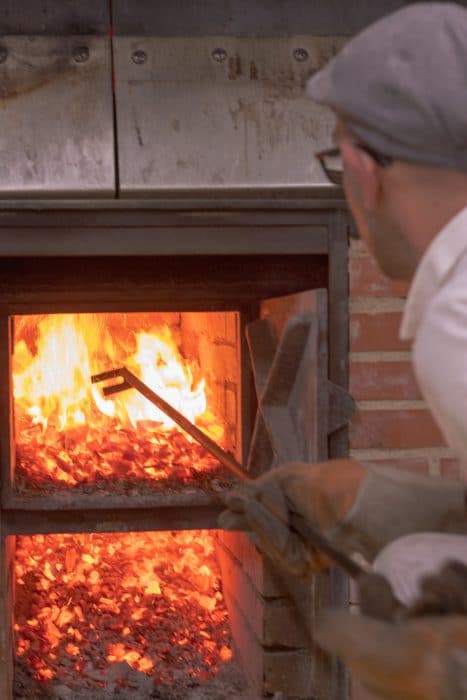
The U.S. Energy Information Administration has studies that estimate the recoverable natural gas is about 2,462 trillion cubic feet. As of the latest data in 2016, the U.S. consumes around 27.5 trillion cubic feet per year. Which means the U.S. only has enough natural gas that will last approximately 90 years.
This computation is within the assumption that there will be no more additional resources that we can discover in the country. Also, the U.S. needs to keep its natural gas consumption at 27.5 trillion cubic feet to have enough for 90 years. However, this number is based on the country’s reserves alone. The U.S. imports and exports natural gas, and all these will affect the numbers.
Worldwide, based on an estimate by the International Energy Agency, in 2015, the world will be consuming about 3,400 cubic kilometers of gas annually. By 2009, we’ve only been able to use around 8% of the world’s recoverable source of natural gas. The whole retrievable source is approximately 850,000 cubic kilometers, and we’ve used up 66,000 cubic kilometers of it.
Based on projections, we will only have about 250 years to enjoy natural gas until it runs out; if you factor in a 2%-3% increase in natural gas usage worldwide, that number decreases to 80-100 years. As of 2019, natural gas usage is 23% of the total energy demand worldwide. We can help extend the number of years we can use natural gas if we are more mindful of our usage.

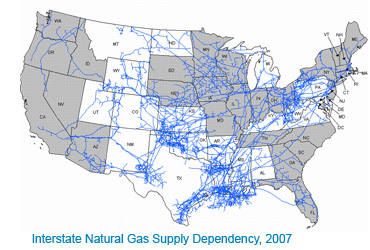




During the 2003 Power Outage, I had gas the entire 3 days without power here in the Metro Detroit area.
The technician from Xcel Energy in Denver, Colorado, said that natural gas in this area would continue for “a few days” after a power outage because of the pressure already in the line. He said that it depended on how many people were using their gas-furnaces and gas-fireplaces to heat the front room in their homes once their furnaces died because the electricity had stopped. The guy from the water company said the same thing. He said that water is pressurized through the pipes by electric motors, but we would have water for 3 or 4 days after a total power loss because of the pressure already in the line. I’ve never been forced to test these statements in a real emergency though…
November 2015 70mph Wind storm in Spokane, WA, knocked out power to 180,000. Our power was out for 7 days and the gas to our fireplaces kept areas of our home warm and we have a gas hot water heater so could take a shower. Husband is wanting to hook up a generator to natural gas when there is another power outage.I don’t think he believes natural gas will go down…
Do it! We also live in Spokane and have lost our power several times since the storm you’re talking about. We now have a Generac generator that runs on natural gas, that keeps almost all of our house running as usual.
I have a whole house electric generator fired by natural gas. In the event of a major electric grid failure in my area, Central Florida, how long can I depend on my natural gas supply??
Propane is the way to go. Store it on your property and you will have fuel even when power goes out …
How long will a 500 gallon tank last for a 10,000 watt generator if you only use a couple of heaters, stove, fridge and freezer? Sure would appreciate any advise. Thank you.
Look at your particular generator’s fuel consumption. It should have a chart for 1/4, 1/2, and Full load with different lpg consumption values per hr. Then multiply that by the number of hours per day you intend to run. Next you’ll want to determine your desired tank size (note: LPG tanks are filled to 80% capacity, so a 100 gal tank would fill to 80 gal) A thumb in the wind value for your generator size without knowing its specifics would consume about 28gal per day @ 1/2 load, so a 100 gal tank would last you about 3 days of non stop 1/2 load running. A 500 gal tank about two weeks.
there is always a wood burning fireplace to create heat if power and gas fail.
Bottom line! Nobody can depend on any utility after SHTF. Equip your homestead with solar power and have backup regulators stored in an EMP proof container. Also you need to have wood heat and cooking equipment in place before SHTF. Buy and learn to use hand tools including saws large enough to cut down trees and process them into firewood. You will need to have several cords of firewood on hand by mid-summer so it will have time to dry out before cold weather sets in plus you will be using wood to cook three hots a day for your family. As for water when you buy your homestead make sure there is water on the property. Do NOT buy the land without water, mineral and timber rights, to do so is foolish as someone WILL come on your land and strip it bare leaving you with nothing.
Very informative article. Thanks a lot for sharing.
How would one find out if the gas lines in their area are powered by natural gas & not electric?
Contact your local power company.
Excellent and informative resource! You have covered this topic well.